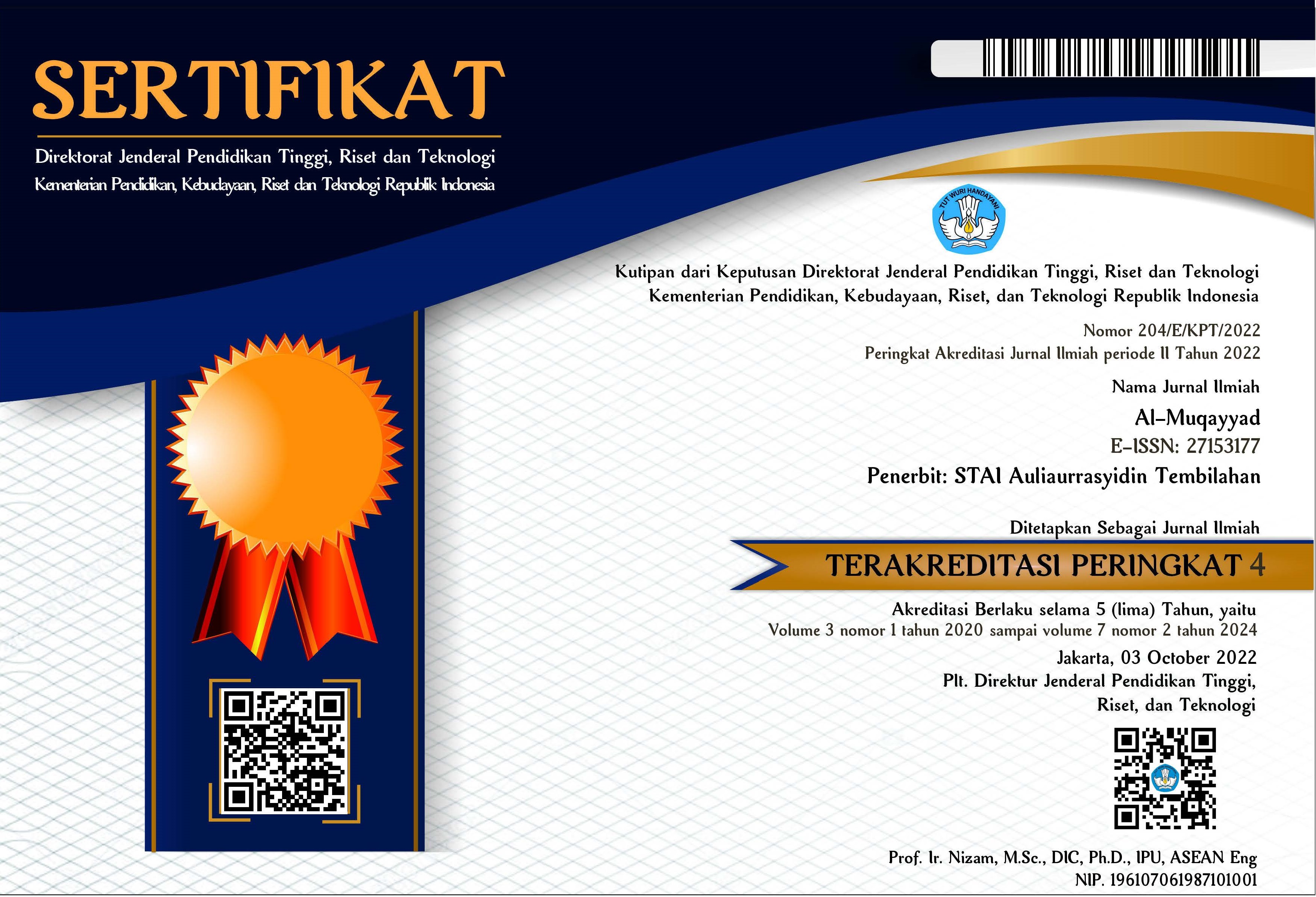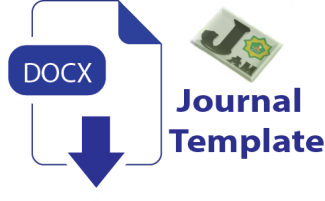Mudharabah: Sustainable Sharia Investment Model
DOI:
https://doi.org/10.46963/jam.v6i2.1289Keywords:
Mudharabah, Sustainable Sharia, Investment ModelAbstract
Mudharabah is a partnership between capital providers and entrepreneurs, where profits and risks are shared fairly in accordance with Islamic principles. This article aims to investigate the concept of Mudharabah as a sustainable investment model in the context of Sharia finance. A comprehensive review of the literature on Mudarabah and sustainable investment provides in-depth insight into the principles underlying both concepts. Regarding Mudarabah, this article examines its history, evolution and practical implementation in various economic sectors. On the other hand, sustainable investments are analyzed by considering social impacts, the environment and ethical considerations in making investment decisions. The findings of this research indicate that Mudharabah, as a sharia investment model, has significant potential in providing added value to society and the environment. Active participation in Mudharabah-based businesses can encourage economic empowerment, reduce disparities, and create opportunities for small and medium entrepreneurs.
Downloads
References
REFERENSI
Abduh, M. d. (2007). Islamic banking and economic growth: The Indonesian experience. Journal of Islamic Economics, Banking and Finance 3 , 2, 63-94.
Ariff, M. d. (2010). Islamic Financial System: Principles and Operations. Islamic Research and Training Institute .
Afifuddin. 2012. Metodologi Penelitian Kualitatif. Bandung: Pustaka Setia.
Archer, S., & Karim, R. A. A. (2011). Islamic finance: A new ethical challenge? Journal of Business Ethics 98.3, 437-452.
Askari, H., Iqbal, Z., & Mirakhor, A. (2010). Globalization and Islamic finance: Convergence, prospects, and challenges. John Wiley & Sons..
Batam, T. T. (2021). Metode Penelitian Kualitatif, Kepustakaan, Kuantitatif dan Tindakan Kelas (Pedomana Penulisan Proposal dan Skripsi). Bantul: Lembaga Ladang Kata.
Chapra, M. U. (2008). The Global Financial Crisis: Can Islamic Finance Help? In International Seminar on Islamic Finance.
Chapra, M. U. (2008). The Global Financial Crisis: Can Islamic Finance Help? In International Seminar on Islamic Finance.
Eccles, R. G. (2011). The Impact of Corporate Sustainability on Organizational Processes and Performance. Harvard Business School Working Paper , 12, 35.
Elasrag, H. (2013). Mudarabah as a financing technique in Islamic banks: Controversy and solution. Journal of Islamic Finance 2.1: 34-44.
El-Galfy, A. d. (2011). Corporate governance and the extent of voluntary disclosure in banks: The case of Egypt. Managerial Auditing Journal 26 , 5, 380-405.
El-Galfy, A. d. (2013). Understanding Islamic investors' requirements for corporate reporting: The case of Egyptian Islamic bank. Accounting Forum 37 , 3, 194-208.
El-Gamal, M. A. (2006). Islamic Finance: Law, Economics, and Practice. Cambridge University Press .
GRI. (2018). GRI 101: Foundation 2016. Global Reporting Initiative .
Hassan, K., & Lewis, M. K.. (2007). Handbook of Islamic banking. Edward Elgar Publishing.
Hasan, Z. d. (2010). Sustainability of trade and the gains from trade. Humanomics 26 , 4, 277-297.
Hassan, M. K. (2019). Islamic Finance: Principles, Performance, and Prospects. Routledge .
Hussain, M. T. (2007). Islamic financial contracts, risk, and corporate governance. Auditing and Performance Evaluation 4 , 3, 303-318.
Iqbal, M., & Mirakhor, A. (2007). An introduction to Islamic finance: Theory and practice. John Wiley & Sons.
Kahf, M. (2005). Islamic banks: The rise of a new power alliance of wealth and Shari'ah scholarship. American Journal of Islamic Social Sciences 22 , 4, 1-26.
Khan, F. (2009). Islamic Banking in Pakistan: A Critical Analysis. European Journal of Economics, Finance, and Administrative Sciences , 16, 85-96.
Khan, F., & Bhatti, M. I. "Islamic finance and economic growth: the role of Mudarabah model. Quality & Quantity." 52.3 (2018): 1277-1292.
Khan, T. (2018). The Role of Islamic Finance in Achieving Sustainable Development Goals (SDGs). UNCTAD .
Morgan, S. M. (2002). An empirical analysis of environmental risk disclosure by UK companies. The British Accounting Review 34 , 3, 233-248.
Muttaqin, A. (2022), Hillah Hukmi dalam Pengembangan (Legal Reform) Fatwa DSN MUI Tentang Pelaksanaan PPR Inden Syariah Hillah Hukmi dalam Pengembangan (Legal Reform) Fatwa DSN MUI Tentang Pelaksanaan PPR Inden Syariah. El-Faqih: Jurnal Pemikiran dan Hukum Islam Volume 8, Nomor 1, April 2022 e-ISSN: 2503-314X ; p-ISSN: 2443-3950
Nations, U. (2015). Transforming our World: The 2030 Agenda for Sustainable Development. United Nations .
Scholtens, B. d. (2002). The Sustainability of European Pension Fund Investments: A Comparative Study. Journal of Business Ethics , 45 (2), 147-160.
Shleifer, A. a. (1997). A survey of corporate governance. The Journal of finance 52 , 2, 737-783.
Siddiqui, M. S. (2005). Islamic Banking and Finance in Theory and Practice: A Survey of State of the Art. Islamic Economic Studies , 13 (2), 1-48.
Siddiqui, M. S. (2006). Islamic Banking and Finance in Theory and Practice: A Survey of State of the Art. Islamic Economic Studies , 13 (2), 1-48.
Siddiqui, M. S. (2017). Sustainable and Ethical Investment in Islamic Finance: A Way Forward. Emerald Insight .
Sugiyono. (2014). Metode Penelitian Kuantitatif, Kualitatif dan R&D (Vols. Cet ke-21). Bandung: Alfabeta.
Usmani, M. T. (2002). An Introduction to Islamic Finance. Arab Law Quarterly, 17 (3), 203-233.
Usmani, M. T. (2002). An Introduction to Islamic Finance. Arab Law Quarterly, 17 (3), 203-233.
Warde, I. "Islamic finance in the global economy." Edinburgh University Press (2010).
Downloads
Published
Issue
Section
License
Copyright (c) 2023 Muhammad Juni Beddu, Diana Eravia, Nulatifah Nulatifah, Neri Aslina, Andi Amma Ruhmah, Fitri Mehdini Addiningrum, Muhammad Iqbal Azhari

This work is licensed under a Creative Commons Attribution-ShareAlike 4.0 International License.
Authors who publish with this journal agree to the following terms:
1. Copyright on any article is retained by the author(s).
2. The author grants the journal, right of first publication with the work simultaneously licensed under a Creative Commons Attribution shareAlike 4.0 International License that allows others to share the work with an acknowledgment of the work’s authorship and initial publication in this journal.
3. Authors are able to enter into separate, additional contractual arrangements for the non-exclusive distribution of the journal’s published version of the work (e.g., post it to an institutional repository or publish it in a book), with an acknowledgment of its initial publication in this journal.
4. Authors are permitted and encouraged to post their work online (e.g., in institutional repositories or on their website) prior to and during the submission process, as it can lead to productive exchanges, as well as earlier and greater citation of published work.
5. The article and any associated published material is distributed under the Creative Commons Attribution-ShareAlike 4.0 International License





2.png)



